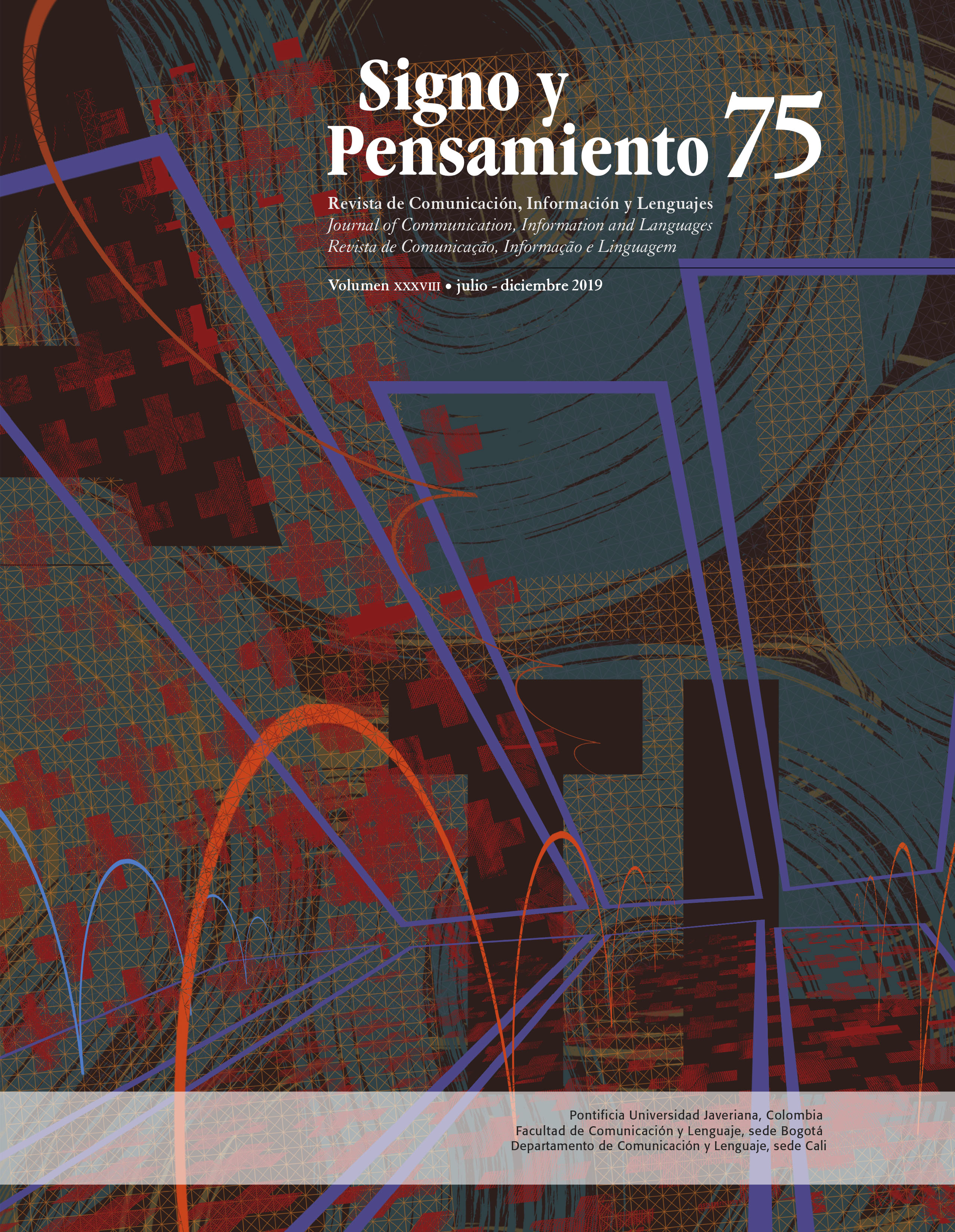Resumo
Este artículo evidencia las primeras reflexiones teóricas de una investigación en curso acerca del concepto de apropiación en los estudiantes de la Licenciatura en Comunicación e Informática Educativa. Dadas las densidades comunicativas de las culturas mediáticas actuales, resulta pertinente buscar un concepto que no solo se relacione con la recepción, sino también con la interacción. Se emplea una metodología cualitativa e interpretativa, tomando elementos de la Teoría Fundamentada para construir dimensiones teóricas de la apropiación en el contexto observado. Estas dimensiones son: problemáticas de sentido, interpelación, interpretación e interacción. Se encontró, en esas dimensiones, que los lineamientos teórico-curriculares de la Comunicación en la Licenciatura han generado incertidumbres en los estudiantes relacionadas con sus perfiles profesionales. Esta contingencia, a la vez apertura, ha posibilitado que produzcan apropiaciones significativas con medios y tecnologías. Estas primeras reflexiones ofrecen un marco de análisis interpretativo para repensar las culturas mediáticas y la educación en tecnologías.
Ardèvol, E., y San Cornelio, G. (2007). “Si quieres vernos en acción: YouTube.com” Prácticas mediáticas y autoproducción en Internet. Revista Chilena de Antropología Visual, (10), 1-29.
Argüello, R. (2010). Las proyecciones de prometeo. Tecnologías de la Información y las Comunicaciones y la (trans)formación del Sujeto (1ª ed.) (Vol. 1). Bogotá: Fractalia Ediciones.
Auge, M. (1992). Los no lugares. Espacios del anonimato. Una antropología de la sobremodernidad. (trad. M. Mizraji). Barcelona: Gedisa, S. A.
Cantril, H. (1979). La invasión desde Marte. En M. Moragas (ed.), Sociología de la Comunicación de Masas (pp. 190-203). Barcelona, España: Gustavo Gili, S. A.
Cortina, A. (2004). Ciudadanía activa en una sociedad mediática. En J. Conill y V. Gozálvez (coord.), Ética de los medios. Una apuesta por la ciudadanía audiovisual (pp. 11-31). Barcelona, España: Gedisa, S. A
Geertz, C. (2003). La interpretación de las culturas. Barcelona: Gedisa, S. A.
Goffman, E. (1970). Ritual de la interacción. Ensayos sobre el comportamiento de la cara. Buenos Aires: Ed. Tiempo Contemporáneo.
Heidegger, M. (2003). Ser y tiempo (trad. J. E. Rivera). Madrid: Trotta.
Kottak, C. P. (2011). Antropología Cultural (14ª ed.). México, D. F.: McGraw-Hill.
Martín, M. V. (2003). Diásporas de sentido en torno a la cultura mediática. En F. Saintout (ed.), Abrir la comunicación. Tradición y movimiento en el campo académico (pp. 157-176). La Plata, Argentina: Ediciones de periodismo y comunicación.
Martín-Barbero, J. (1987). De los medios a las mediaciones. Barcelona: Gustavo Gili, S. A.
Montoya Londoño, M. (2010). Narración, emociones e identidad. Una lectura epistemológica y hermenéutica. Desafíos, 22(2), 277-303.
Real Academia Española (RAE). (2014). Diccionario de la lengua española (23ª ed.). Madrid: RAE.
Rincón, O. (2006). Narrativas mediáticas. O cómo se cuenta la sociedad del entretenimiento. Barcelona: Gedisa.
Santiago Martin de Madrid, P. (2011). Apropiacionismo. Medios de comunicación de masas en las artes visuales. Recuperado de http://hdl.handle.net/10251/9580.
Schutz, A., y Luckmann, T. (2001). Las estructuras del mundo de la vida. Buenos Aires: Amorrortu editores S. A.
Statera, G. (1979). Las investigaciones sobre los efectos de los <mass media>. En M. Moragas (ed.), Sociología de la Comunicación de Masas (pp. 49-65). Barcelona, España: Gustavo Gili, S. A.
Strauss, A., y Corbin, J. (2002). Bases de la investigación cualitativa. Técnicas y procedimientos para desarrollar la teoría fundamentada. Medellín: Universidad de Antioquia.
Thompson, J. (1998). Los media y la modernidad. Barcelona: Paidós Ibérica.
Uribismo. (s. f.). Wikipedia, La enciclopedia libre. Recuperado de https://es.wikipedia.org/wiki/Uribismo#Oposición_y_controversia.
Watzlawick, P., Beavin Bavelas, J., y Don D. J. (2002). Teoría de la comunicación humana. Barcelona: Herder.
Woolgar, S. (2005). Cinco reglas de la virtualidad. En Autor (ed.), ¿Sociedad virtual? Tecnología, ‘cibérbole’, realidad (trad. G. Galdón) (pp. 19-39). Barcelona, España: UOC.
Esta revista científica se encuentra registrada bajo la licencia Creative Commons Reconocimiento 4.0 Internacional. Por lo tanto, esta obra se puede reproducir, distribuir y comunicar públicamente en formato digital, siempre que se reconozca el nombre de los autores y a la Pontificia Universidad Javeriana. Se permite citar, adaptar, transformar, autoarchivar, republicar y crear a partir del material, para cualquier finalidad (incluso comercial), siempre que se reconozca adecuadamente la autoría, se proporcione un enlace a la obra original y se indique si se han realizado cambios. La Pontificia Universidad Javeriana no retiene los derechos sobre las obras publicadas y los contenidos son responsabilidad exclusiva de los autores, quienes conservan sus derechos morales, intelectuales, de privacidad y publicidad.
El aval sobre la intervención de la obra (revisión, corrección de estilo, traducción, diagramación) y su posterior divulgación se otorga mediante una licencia de uso y no a través de una cesión de derechos, lo que representa que la revista y la Pontificia Universidad Javeriana se eximen de cualquier responsabilidad que se pueda derivar de una mala práctica ética por parte de los autores. En consecuencia de la protección brindada por la licencia de uso, la revista no se encuentra en la obligación de publicar retractaciones o modificar la información ya publicada, a no ser que la errata surja del proceso de gestión editorial. La publicación de contenidos en esta revista no representa regalías para los contribuyentes.



